“There are no other Everglades in the world.”
I woke up at 5:45am, determined to make the most out of the first day of the year. It was dark and hazy outside when I started heading towards the Everglades on US-1. As you exit US-1 the traffic starts dwindling until you reach a long single lane street passing through the massive lush green South Floridian agricultural lands. I could barely see anything beyond a few feet thanks to the thick haze that always envelopes wetlands just before dawn.
There is a single road that cuts the Everglades in halves. As the haze started clearing I saw the majestic grasslands all around me. Over to my left the sky was turning burnt orange with the distant pines and cypresses presenting themselves as gradually sharpening silhouettes. I was one of the first outsiders to enter the Glades that morning and I had the entire road to myself. Alas I did not have time to wait and explore the surrounding trails just yet, the canoes were waiting.
Canoeing
A lone van appeared in front of me towing two kayaks behind it, I knew these people were to be my companions on the canoeing adventures. The Nine Mile Pond trail (which is only 7 miles long) is about 25 miles inside the park. The trail is shaped like an 8 and we were supposed to traverse the first loop. Our ranger Zack strapped us in our floating vests, planted us in some hardy aluminum canoes and pushed us out into the pond.
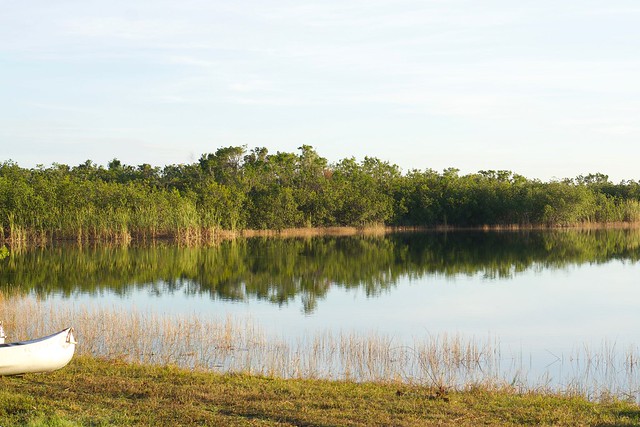
The trail is deceptive as it starts innocently in calm open waters. But as we paddled to the far edge of the pond, we came across a small opening into the red mangroves, they’re called red because of the roots which jut out conspicuously above the waters, and so the adventure began. Maneuvering the mangroves is not unlike parallel parking your car, except there are two drivers each managing a different part of the canoe and the canoe has the turning radius of a small plane. The first time one wades through the mangroves one does not aim for elegance, the goal is simply not tipping and making it through, slowly.
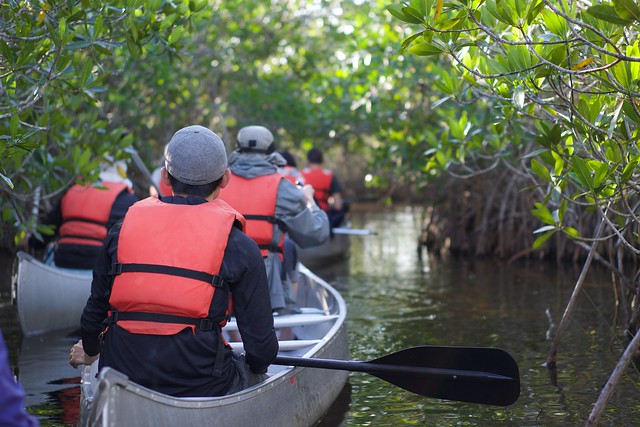
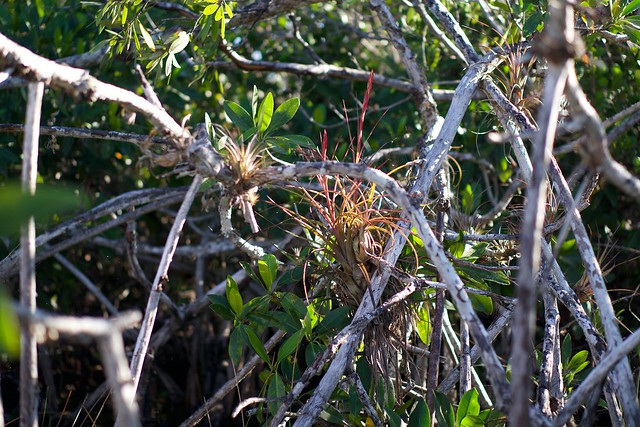
As we passed through the mangroves and the open waters, sweating in the sweltering tropical sun, making slow and gradual progress while dealing with our canoes getting stuck in the massive roots, Zack shared with us his ranger wisdom. I learnt about the bromeliads inhabiting the mangroves stealing sunlight from them, about tree islands and hammocks, about the creation of new lands within these tree islands, the differences between alligators and crocodiles (neither is green btw) and their roles as architects of the everglades.
Here was a ranger, same age as mine, who had been in this park for 2 months, before which he was at Zion for a few years, before which he was at Cape Cod, and next he wanted to go to Alaska. What must drive him to lead such a life, how badly would one want to do this, to commit oneself so completely to the solitude of the wilderness devoid of all society? As Murakami puts it
“The thought struck me that society needed a few people - just a few - who were interested in and even passionate about [—]”
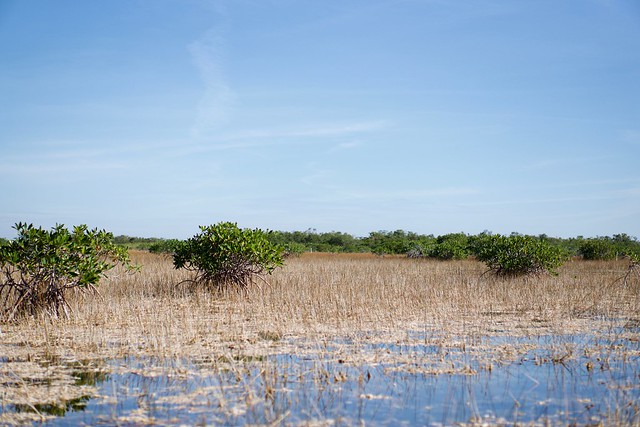
Our brain is capable of great things, but one thing it is incapable of is comprehending scale. The more time I spent on the waters the better I grasped the enormity of the Glades. Even though I had just driven 25 miles inside the park to get to the pond it hadn’t really sunk in, but out here in the waters where we found ourselves disconnected from everything familiar we had no choice. There was a small stretch of open water dense with periphyton where we all drifted apart and were disconnected not just in space but also in time from the rest of humanity. We had entered a parallel universe where humans no longer ruled but were mere visitors awestruck by the wonders of an unknown kingdom. We must’ve been in somebody else’s dreams.

After about 2.5 mangrove hours (lol?) we came to two tiny ponds, the final stage of our journey. These tiny ponds were not without surprises. On the first pond we encountered a giant crocodile, about the size of a small car, basking carelessly in the afternoon sun. And the second pond had two half submerged alligators doing the same. We were in their home-ground and they did not give a fuck about our presence, we were to play by their rules. Keeping a safe distance we took a few pics and bade them farewell. It is one thing to see them in a zoo but it is something else to see them in the wild, it makes you acutely realize just how far we’ve come from being creatures of the wild, from being somewhere at the bottom of the food-chain to the very top.
As we paddled back to our cars, solemn and content, a faint breeze greeted us. We had become wiser and gained a bit more humility.
Hiking
The good hiking trails in the Everglades pass through hammocks, pinelands and prairies. There are some which go through the swamps in the Cypress dome for which you need a ranger to show you around. Unfortunately these trails are all one way trails and are best done when you either have two cars or you’re camping, considering that most of the everglades is a swamp it is surprising though that there are any.
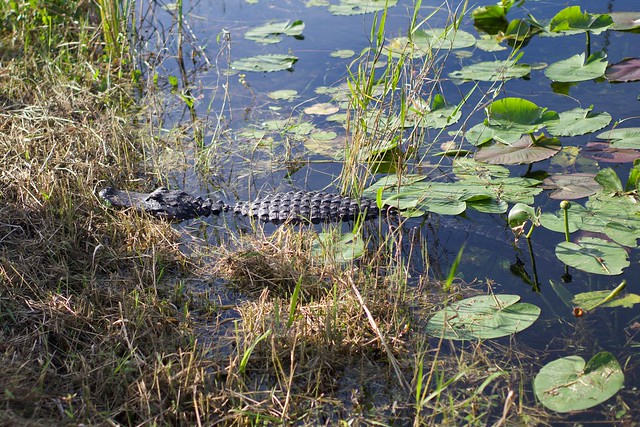

Then there are a lot of walking trails which are less than a mile long. In many of these trails you have to walk on boardwalks very conveniently built over swamps. I hiked the Anhinga, the Gumbo Limbo, the [Pinelands](Pineland Trail) and the Mahogany Hammock trails. While not the most amazing trails I’ve ever hiked these were pretty unusual as you could often see alligators and swamp birds frolicking VERY close to you. Then I also went on a hiking tour with a ranger and learnt about the connection between forest fires and pines, about the algae and sawgrass. This was supposed to be a hike through the Cypress dome but the cold made that impossible.